
Keywords: translation; phonetic features; morpho-syntactic features
The present study aims at presenting the configuration of the literary norm used by archimandrite Nicodim Greceanu in his translation of Polyzois Kontos’ Poikili Didaskalia, entitled Învățături de multe științe (1811). The analysis discusses the phonetic and morpho-syntactic features of the text in order to see to what extent they are specific of the Wallachian literary norm of the period.
More...
Keywords: war prisoners; World War I; belligerents; total war; prisoner status; international law;
Although military (and civilian) internment has become associated with World War II in the collective memory, it has amuch longer and painful history. The turning point of this history took place during the First World War when, in the nameof “security” in a total war, the internment of “foreign enemy” became part of state policy for the belligerent states, leadingto imprisonment, moving and, in extreme cases, death by neglect or deliberate killing of hundreds of thousands of peoplearound the world. Among these heroes, often “unknown”, there were many Romanian soldiers who were taken prisoners andinterned in various camps of the Central Powers; this article is dedicated to them.
More...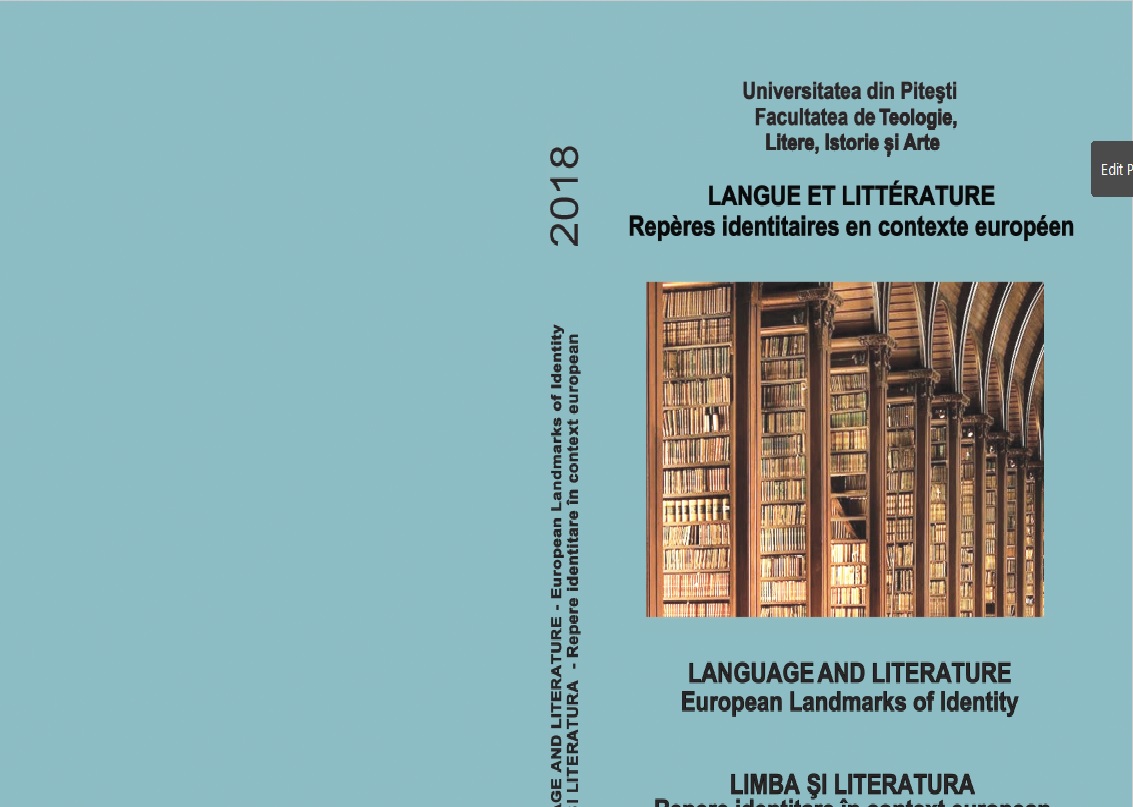
Keywords: literary norm; measure units; potatoes; recipes;
The first text written in Romanian about the importance of the potatoes as a very nutritious food supplement was printed in 1818, in Iași. The text is very important for our old culture, because it reflects the changes in the economy of the period and highlights the cultural connections, the German original being translated into Romanian following a Greek intermediary translation. The various recipes with potatoes as the main ingredient are also important for the Romanian gastronomic literature at the beginning of the 19th century. The literary norm displayed by the text is that of the period, preserving several phonetical and morphological traits specific of old Romanian.
More...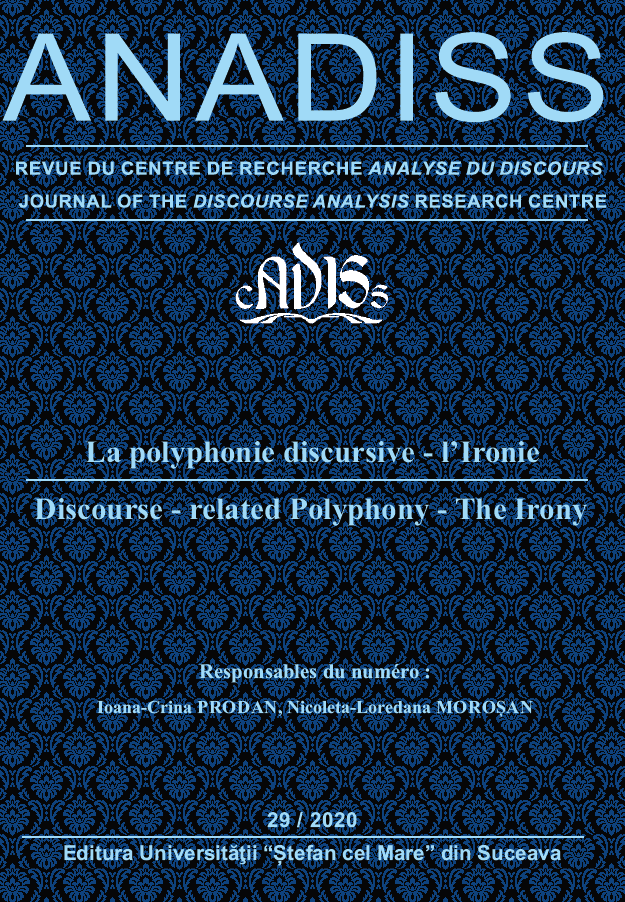
Keywords: irony; phraseologism; discourse; context;
Starting from a couple of theoretical remarks about the semantic nature of irony, the first part of the present paper analyzes the linguistic markers of the ironic intent for some of the representative Romanian phraseologisms pertaining to the ironic register; the second part of the paper focuses on the discursive use with reference to some of them, i.e. on the means of actuating the contextual ironic meanings in the public discourse.
More...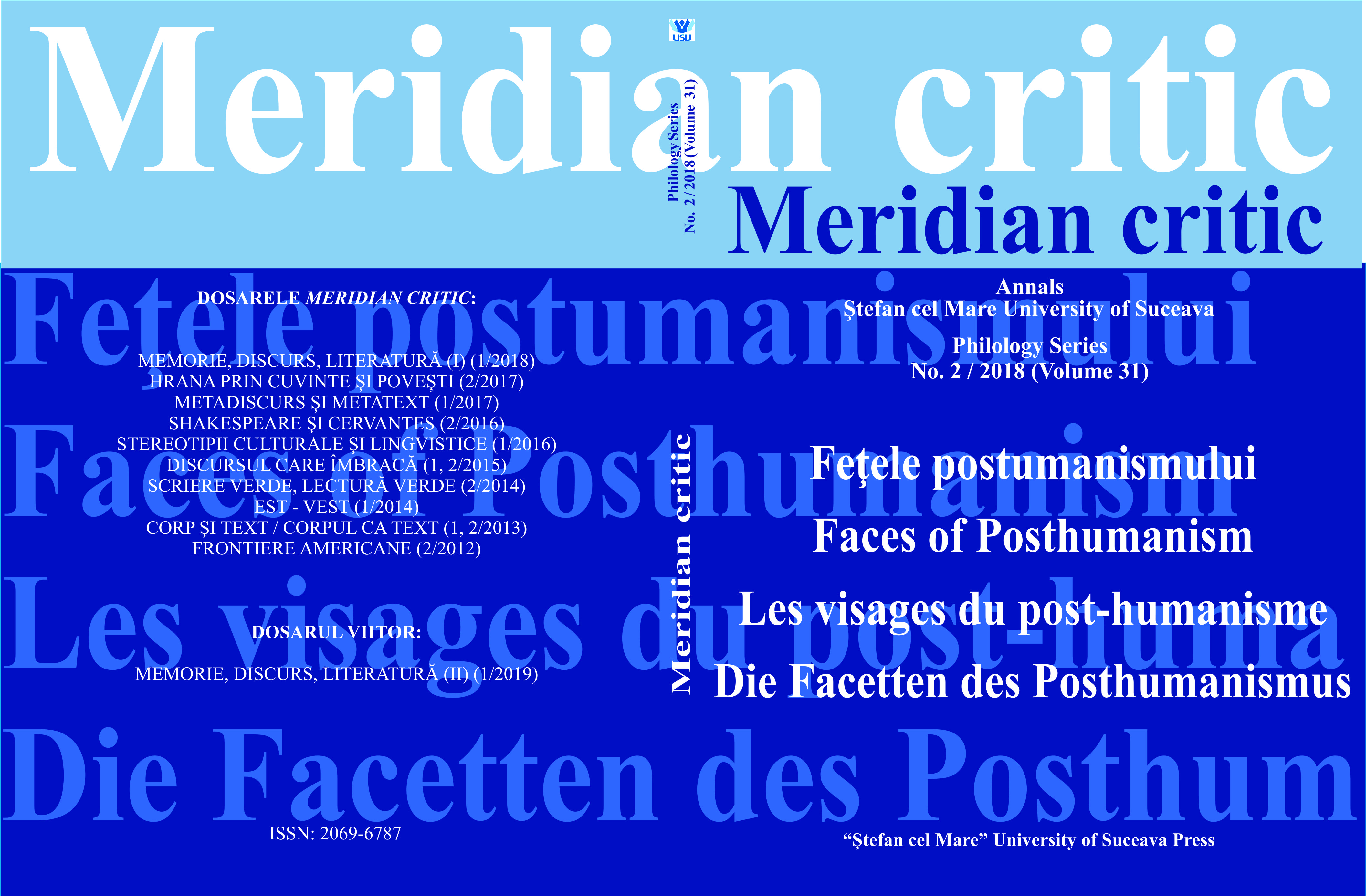
Keywords: comparison; fixed constructions; semantics; pragmatics; creativity;
The article presents a couple of pragmasemantic directions of the usage of the fixed comparative constructions containing names of plants, animals, birds and insects. The language facts in canonical form – i.e. structured around like as the phrase index – were analysed from more viewpoints: formally, as to their source fields, stilistically; our analysis was followed by an in-depth research of article titles where such structures occur with a modified structure.
More...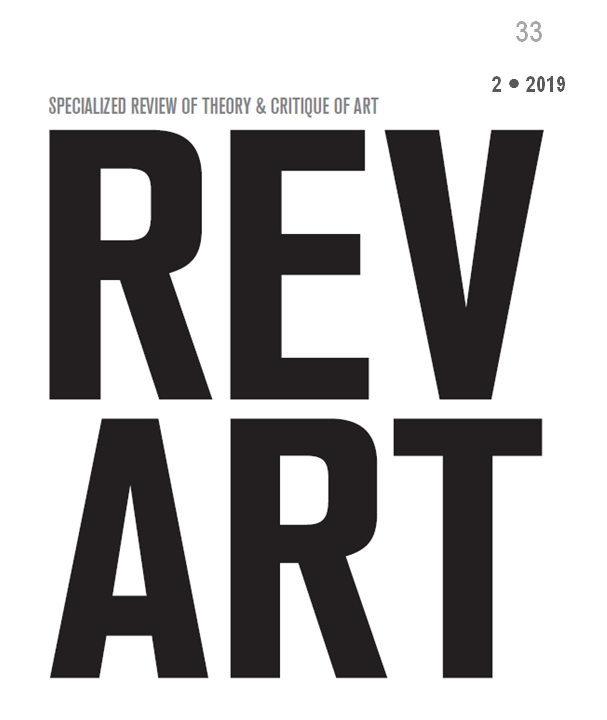
Keywords: Istoria Muzicii Românești; Muzică corală românească; Cor de copii;
Creaţia corală românească, una dintre laturile importante aleafirmării artistice a poporului român, merge pe direcţia tradiţiei iniţiate decompozitorii români încă din secolul trecut. Alături de celelalte dimensiuniale creaţiei româneşti şi creaţia corală preia elemente caracteristicemarilor epoci muzicale universale (baroc, clasic, romantic, impresionist)într-un mod creator. Articolul de față își propune o incursiune în istoriamuzicii corale românești din secolul al XX – lea, concentrându-se perepertoriul dedicat corului de copii.
More...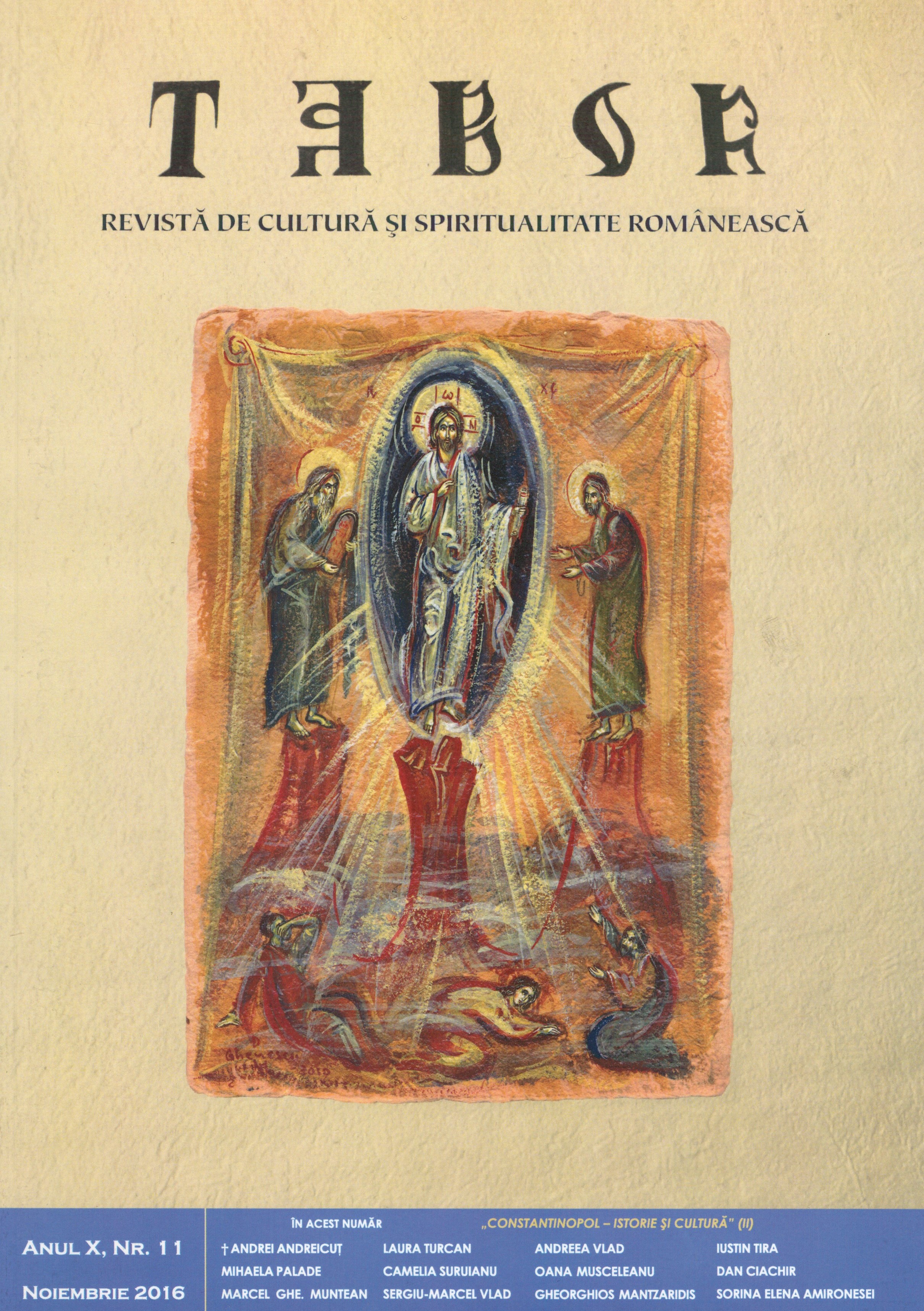
Keywords: Constantinople; the fall of Constantinople; the Ottoman Turks; the church Hagia Sophia; mosques in Constantinople;
On the stage of world history, there have been large cities and small towns, of which only one was known by provincials not by the name given by Emperor Constantine, but by the urban and social attribute of πόλη, the city par excellence, the only city that fulfilled certain standards of urban comfort in those Middle Ages whose end was believed to have coincided with the end of the respective city, namely Constantinople. Once founded on the site of the ancient colony Byzantium, it had to face a series of sieges, each more dramatic. After it faced numerous attacks, in the end it fell on May 29, 1453, being conquered by the Ottoman Turks. Only the city of Constantinople had a different fate, its final political occupation, leading to the quasi-total artistic conquest of the conquerors. Although its name was erased from the world maps, its current name being that of Istanbul, although churches that were not destroyed were turned into mosques and the fate of the most important ones, Saint Sophia and Chora, the Kariye Djami, whose aesthetic value led to their conversion into museums, it is uncertain, a strictly architectural reading, putting aside any Christian or pagan insignia (Holy Cross, respectively crescent) and focusing solely on forms, volumes and architectural structures, find that most of the mosques in the conquered city, as well as elsewhere, strikingly resembles the Hagia Sophia. And browsing Islamic architecture reveals that after the conquest of Constantinople in 1453, a new architectural structure of the mosques, of central type, evolved from traditional Christian architecture. So, minarets can tear the air near the Saint Sophia, the crescent can replace the cross on top of the dome, its muezzins can trumpet the prayer times through the specific oriental undulations, but, beyond that, the architectural structure of Islamic mosques carries over the centuries the mark of the largest Christian Byzantine church, Hagia Sophia, as a testimony to a historical paradox, a Constantinople between conquerors and conquered...
More...
Keywords: present-day Romanian; relative-interrogative and indefinite adverbials; alterity adverbials; CoRoLa; internet (Google); morphosyntax;
The Syntactic Doubling of Relative-interrogative and Indefinite (Temporal, Modal and Quantitative Adverbials) through Corresponding Alterity Adverbials in Present-day Romanian. This study represents a continuation of a previous study (Chircu 2020b); it discusses the distribution of (temporal, modal and quantitative) alterity adverbials which syntactically double semantically equivalent relative-interrogative and indefinite adverbials. The alterity adverbials strengthen the meaning of the relative-interrogative and indefinite adverbials and offer alternative solutions of fulfilling the action expressed by the verb or, in the case of modal adverbials, of satisfying the constraints of a ternary relation. In the identified contexts, it can be observed that the alterity adverbial is used both anaphorically and cataphorically, depending of the choice of the speakers. For this analysis, the author has extracted data from the present-day language (the CoRoLa corpus and Google).
More...
Keywords: vocative; nominal address forms; Romanian; Portuguese; French;
Vocative Nominal Address Forms and the Expression of Social Relations in Romanian, Portuguese, and French. In this paper we analyze the vocative, the grammatical case that speakers use to encode the interlocutor in discourse, based on several criteria: symmetrical or asymmetrical social relations, close or distant relations, written vs spoken communication, regional usages, etc.Our socio-pragmatic analysis based on vocatives used in the novel Wasted Morning by Gabriela Adameșteanu and the Portuguese and French translations identifies the values of these linguistic means according to the relational dynamics among characters, their social status, the level of education, and gender.
More...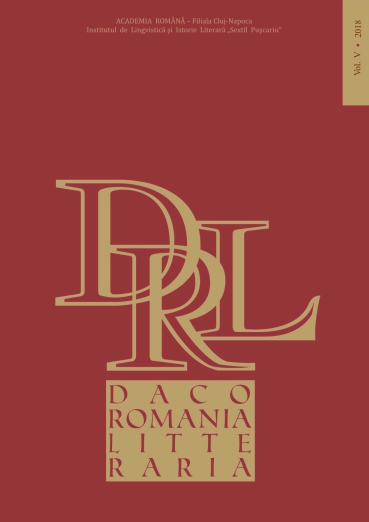
Keywords: intellectual life during the II world war; Transylvania; correspondence; Dumitru Popovici (1902–1952); Ion-Horia Rădulescu (1902–1962); Dumitru Caracostea;
The article retrieves a total of 19 letters from the 1940–1943 correspondence between the literary historians Ion-Horia Rădulescu and Dumitru Popovici. In fact, this is a one-way correspondence: the former, located in Bucharest (and in Paris) is writing to the latter, who took refuge in Sibiu along with the “Ferdinand I” University of Cluj, due to the retrocession of Transylvania to Hungary in 1940. From the point of view of their content, most of the letters refer to the stage of publication of Popoviciʼs papers and to Radulescuʼs research projects, one of the central themes being the editing of a volume in homage to Dumitru Caracostea.
More...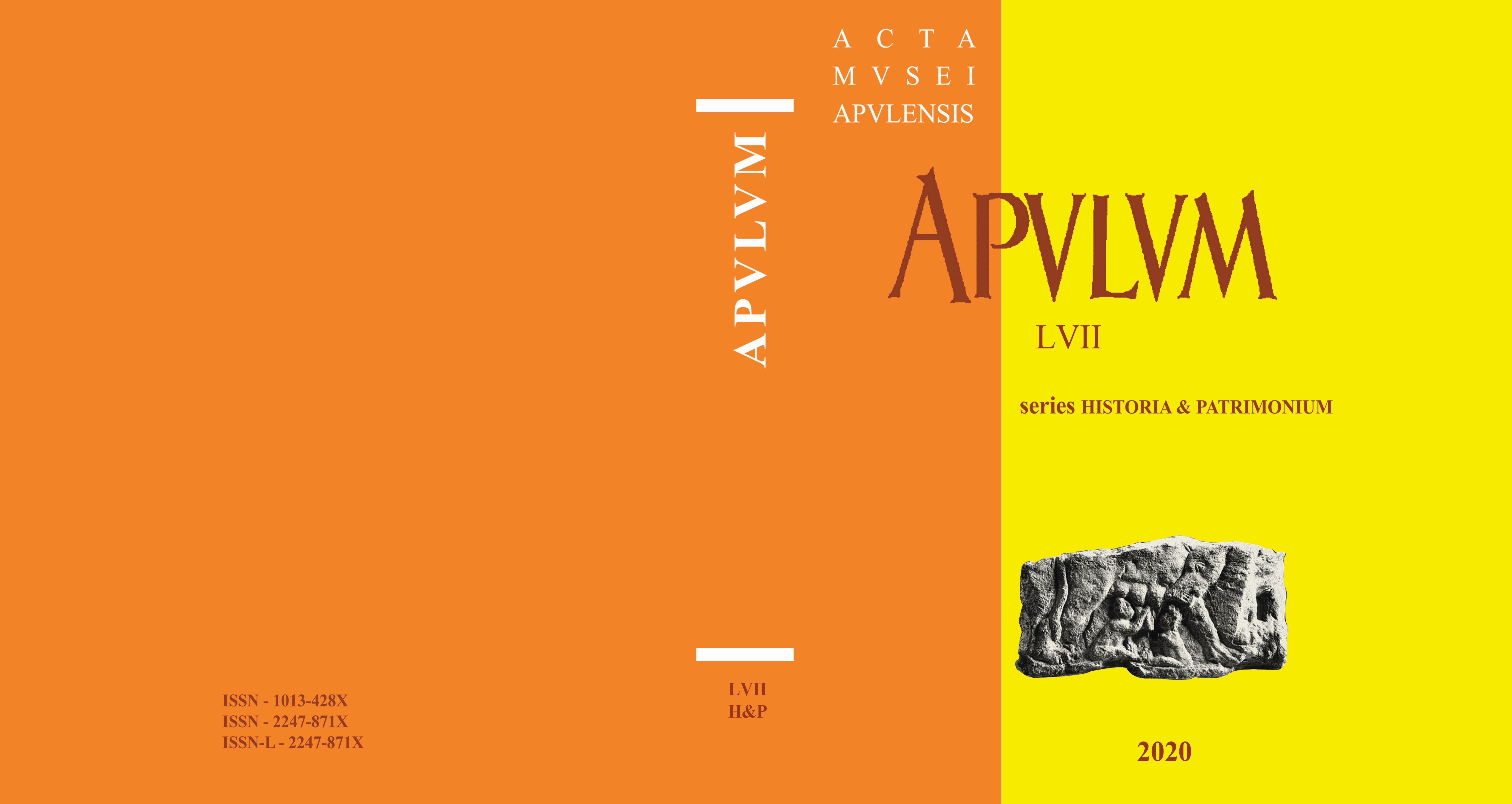
Keywords: means of transportation; Union of Transylvania; 1st of December 1918; trains; cars; carts; on foot;
As the National Assembly from Alba Iulia was programmed for 1st of December 1918, thousands and thousands of Transylvanian Romanians planned to make the trip and be part of this great event, that was about to establish the Union of Transylvania, Banat and “The Hungarian Parts” with the Kingdom of Romania. For the participants coming from a long distance, the most used means of transportation was the train. The Hungarian government took measures to supplement the train sets, not to be accused of jeopardising a democratical meeting, that was meant to express the voice of the Romanian population. Most of the additional train sets were introduced in 30th of November. On the other hand, the railroads were problematic. The train stations, especially, experienced tensions because the Hungarian National Guards controlled an important part of them. At the same time, the German troops were retreating from Romania after the Armistice and had to cross the territory of Transylvania. However, the participants were enthusiastic during the travel, singing many patriotic songs, dancing during stops in stations and cheering. At the destination, in Alba Iulia railway station, the Romanian National Guard also called the Romanian Legion of Alba Iulia attended the reception of the guests in the town, in a triumphal manner. Most of the participants from Alba Iulia’s surroundings came to the town on foot. They were normally coming in formations, very organised and disciplined, but enthusiastic as well. There were also exceptions, with delegates travelling a more significant distance on foot. There were also mounted participants and delegates that covered the distance on carts or carriages. On several cases, automobiles were helpful for those able to afford them. For some participants, the travel started in 28th of November, but the most of people came in 30th of November, while those from villages not far away from Alba Iulia set off in the early morning of 1st December. Most of the members of the Central Romanian National Council, the main political body of those days, along with the leader Ștefan Cicio Pop, came, for example, by train in 29th of November. After the Assembly, the 100.000 participants travelled back home, starting in the afternoon of that day. The present article is based on many memorial sources and newspapers from 1918, presenting numerous examples on the matter.
More...
Keywords: church;cult building;architectural landscape;triconch plan;painting;engraving;
The study brings to the attention of the public several churches with a triconch plan in Chișinău, which have survived the changes in architecture that have occurred over time. The Church dedicated to the Assumption of the Blessed Virgin Mary, known as the Mazarache Church; Annunciation Church, the Church-martyr Saints Archangels Michael and Gabriel, known as the Old Council; Church of St. Ilie. We follow the way in which they were represented by the plastic artists Șneer Cogan, Gheorghe Munteanu, Ludmila Țonceva, Veaceslav Ignatenco, Galina Cantor-Molotov and others.
More...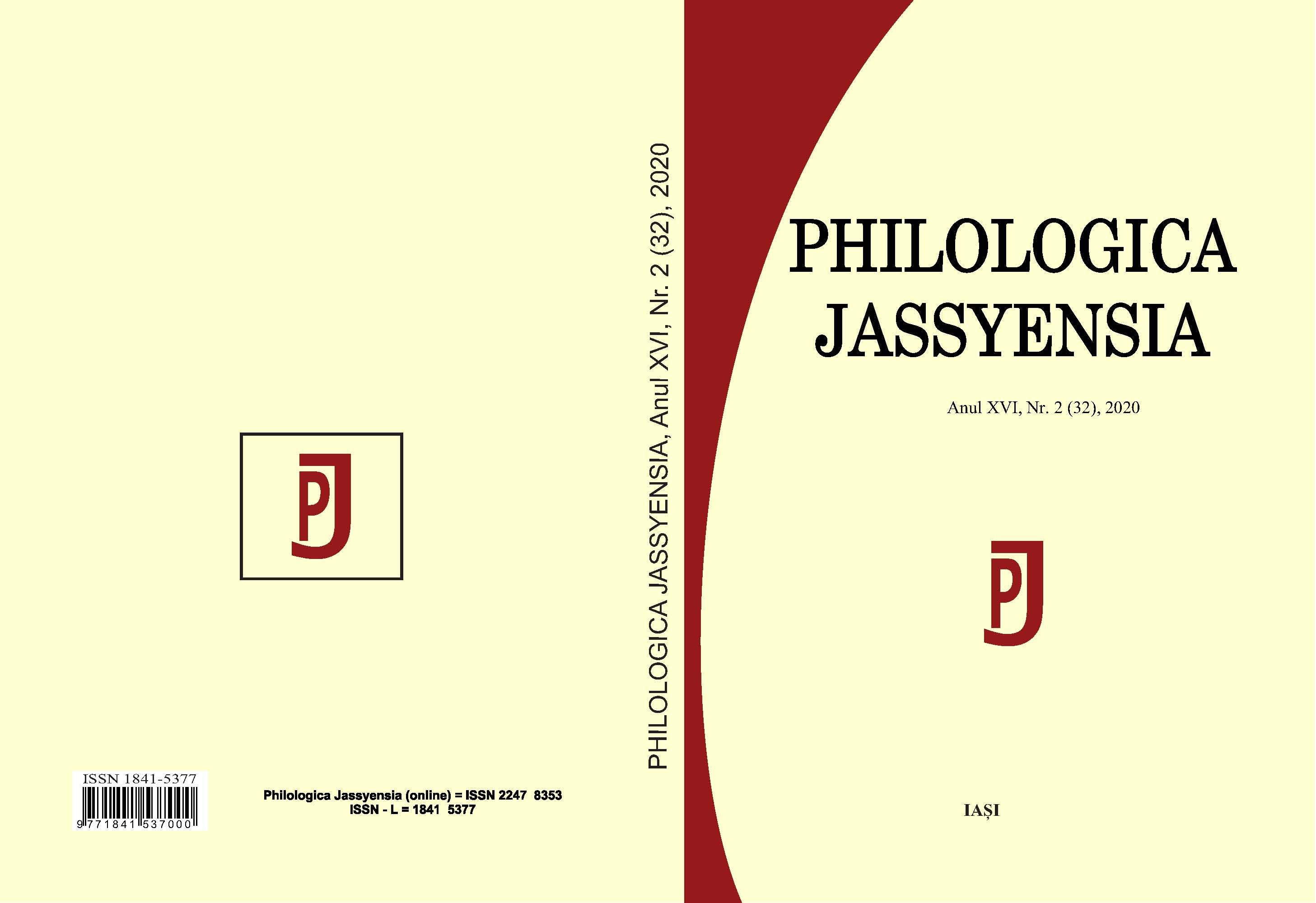
Keywords: Mihai Eminescu; Translation Studies; poetry translation; untranslatability; translation into French; signifier; signified; culture-bound terms; translation dissemination;
In this paper we analyze a recent translation into French of some of the poems written by the Romanian poet Mihai Eminescu: Poeme/Poèmes, published in 2018 by Muzeul Literaturii Române Publishing House. The translation is signed by Liliana Cora Foşalău. In the first part of the study we examine some critical opinions concerning previous translations into French of Eminescu’s poetry. In the second part we discuss the translator’s note included in this new edition. The third and last part of the paper is represented by the critical assessment of the translation that represents the main item of the corpus.
More...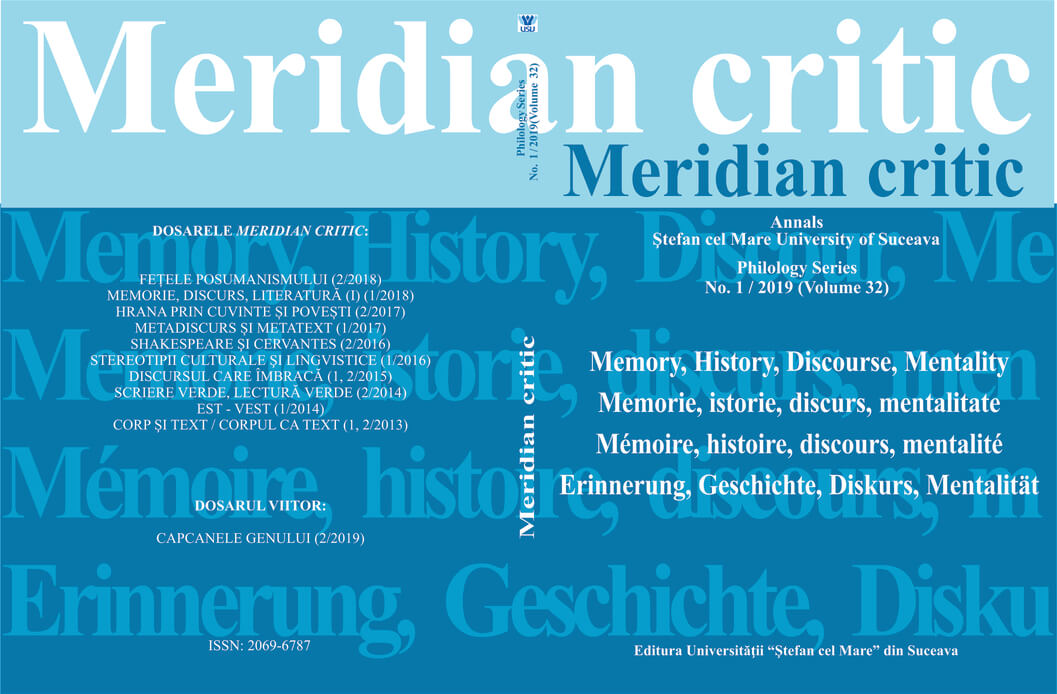
Keywords: figures;play;word games;creativity;holorymes;
Although word games are present almost everywhere in everyday language, in news or in advertisments, literature provides us sophisticated phenomena and allow thus a complex, sharp and multi-shaded analyses according to many criteria. The originality of the poet from Timişoara, Ştefan Foarţă came clearly forward by the shape of the poems and the word games which they contain. By mixing up sounds, syllabes, syntactical structures and especially meanings, throughthe word games the author reveals his great art. By carefully moving beyound and through the borders, Foarţă proves his sound daydreaming; fantasy; he rethinks the borders, changes the codes and thus allow us to unveil, causing addiction between word games and creativity. The author, in his own characteristic style, mixes the puns with the anagrams, holorhymes, playful or cipherea statements. The article aims to sum up the main figures that can be found in Foarţă’s poetry by applying a stylistical method.
More...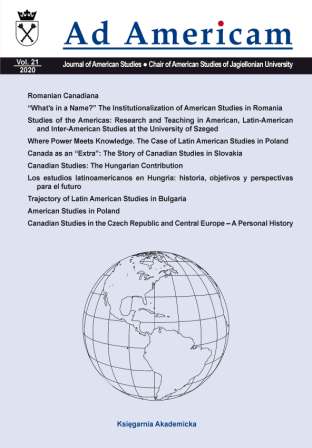
Keywords: Romanian-Canadian relations; Canadian Studies in Romania; CEACS; research projects; teaching; academic events;
The rise of Canadian Studies in Romania, particularly in the academia, as well as their recent (relative) decline, is presented with emphasis on the last twenty-five years. Individual interest and enthusiasm as well as the foundation of CEACS contributed to the Canadian Studies “boom” in 2000-2012, when Canadian Studies Centers were founded in several important Romanian universities, the number of Canadian Studies classes at BA and MA levels increased, large research projects were completed, PhD theses were initiated and quite a few defended.
More...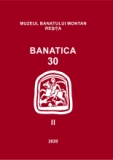
Keywords: Moldavia; Istrati; library; reading; Saint Petersburg; boarding school;
We might still speak about people and their actions in the first half of the 19th century within the process of the Romanian society modernizing, even if they were not among the master minds in the revolutionary movements of 1821 or 1848, and didn’t run decisive deeds in changing Moldavia and Wallachia. The present article reconstitutes Iancu Istrati’s life, a Moldavian landowner, on the basis of his documents in the National Archives of Romania, and other papers of that time. I have chosen some of his actions he undertook as a landowner at Călimănești (county of Tutova) that practically proves how the Romanian society was modernized during the two decades after the autochthonous reigning had been re-instituted: his library, with its inventory researching and some of its readers; education of young people and his attempt to send a young boy to the Military Academy in Saint Petersburg and some data on the curricula at the boarding school; managing of his goods, modern measures in increasing it, and a brief inventory of a landowner’s house; his liaisons with important members of his family – his brothers Nicolae Istrati, writer and politician, and Melentie Istrati, Superior at Slatina Monastery and bishop of Huși, and his brother-in-law Vasile Adamachi, merchant, landowner and great benefactor of the Romanian Academy.
More...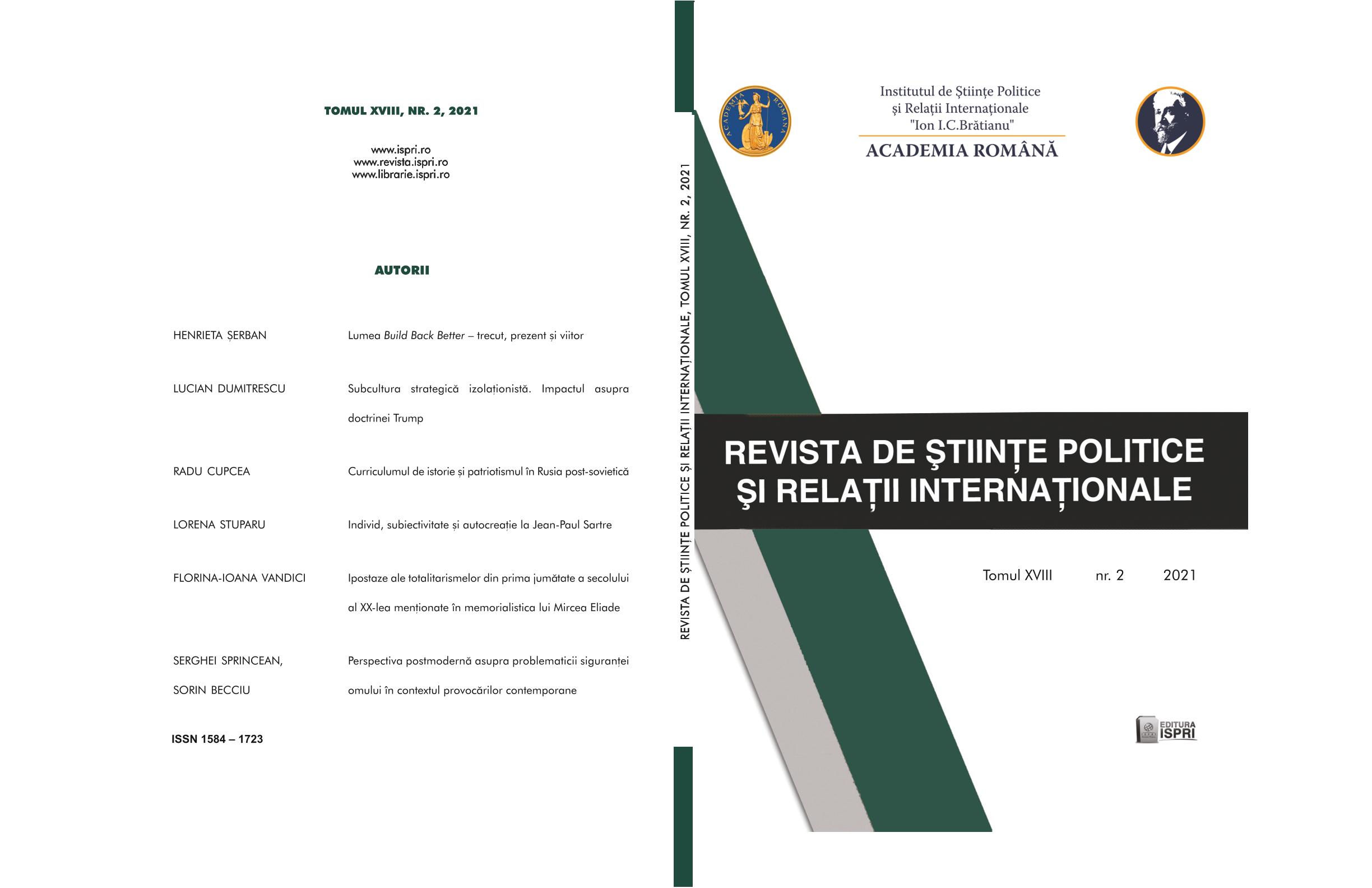
Keywords: history; memory; identity; Russia; textbooks;
In the last two decades, history has regained its position as an important instrument in Russia’s internal affairs and the ex-Soviet space. Politization and instrumentalization of historic content wants to achieve a new seemless identity. This determines young students to view with admiration the historical past and the present with its current political leaders. Under the strict supervision of the polical class, Russia’s entire XXth Century history has been rewritten. This process did not lack opposition, but it was intolerant to alternatives. The articles intends to explore the way these events took place between fabrication of historical facts and replacing a truth that resurfaces.
More...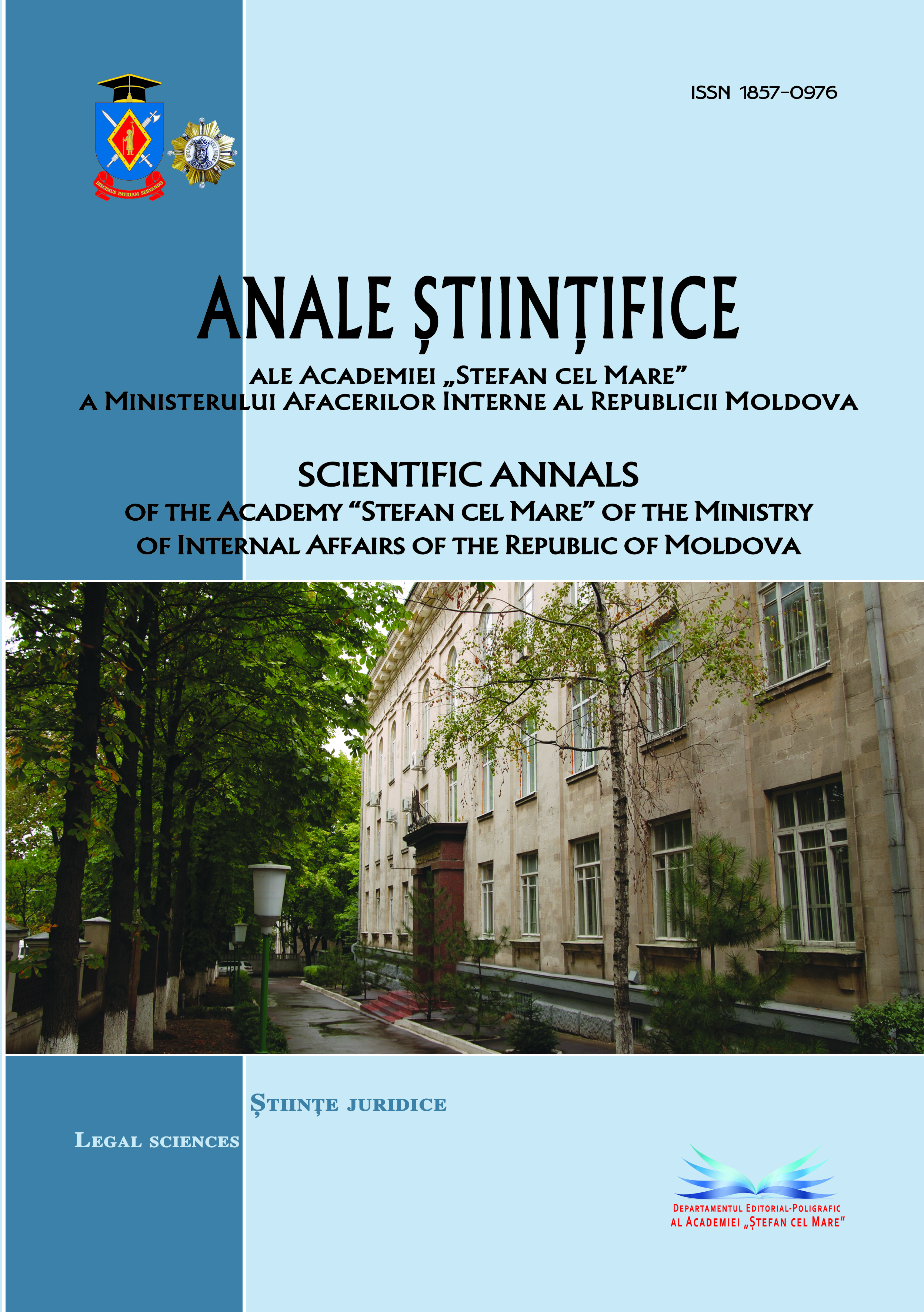
Keywords: security; safety; social relations; democracy;
The security of the state and society, the security of the person are fundamental social values. Their existence and realization depend on the normal conduct of the state’s activity in carrying out its tasks and functions. The regulation of social relations, the rule of law and discipline constitute true democratic values. The issue of public order and citizen safety is being raised in the European area, with a lot of topicality, and the concerns of decision-makers in this regard are increasingly evident, but also of citizens who find it increasingly difficult to accept the climate of insecurity. Therefore, at the heart of the public authorities’ concerns is public order and citizen safety, as major benchmarks that condition the proper functioning of the competent state bodies.
More...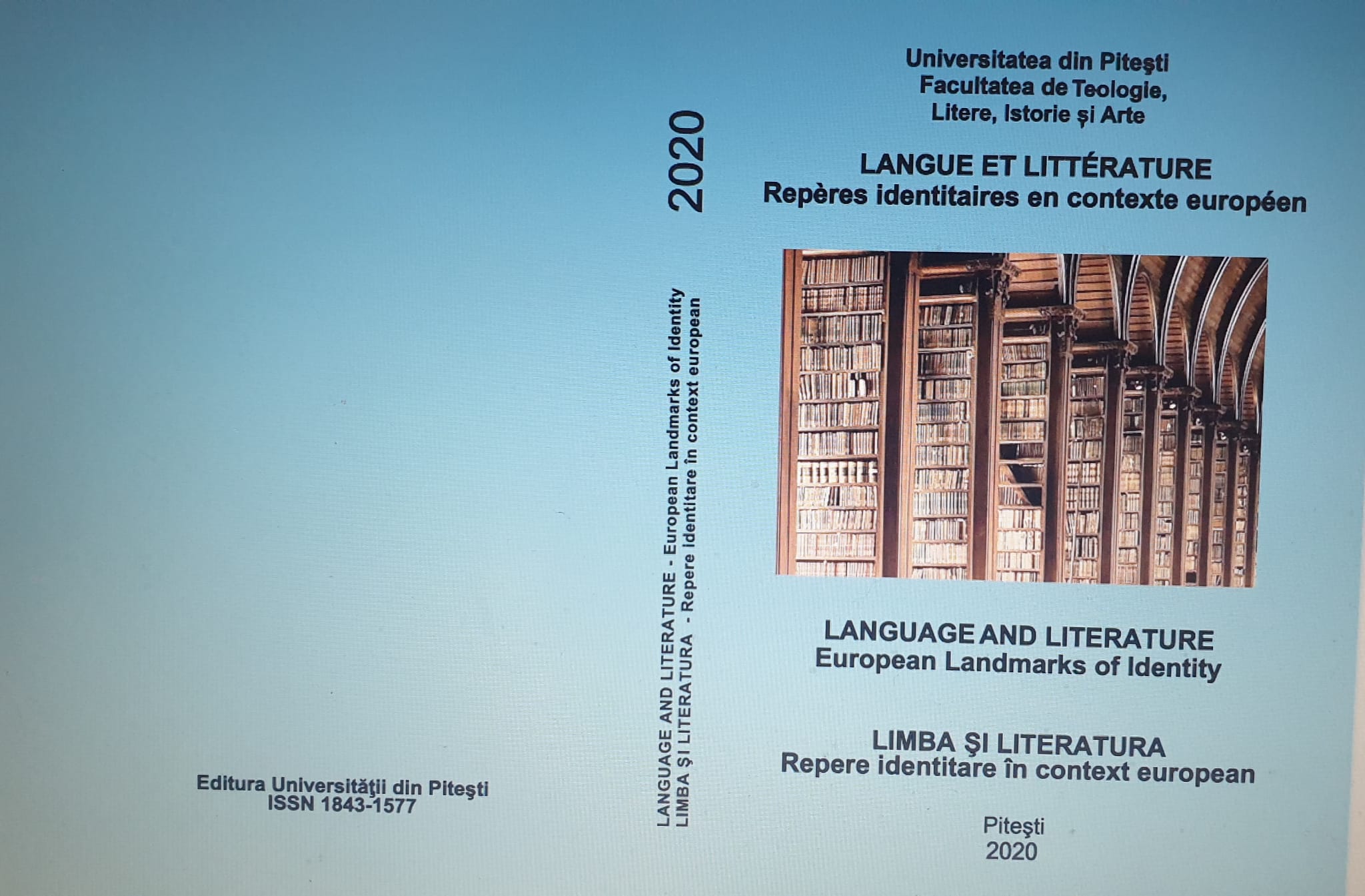
Keywords: literary language; travel literature; French language; neologisms; phonetic adaptation of loans;
At the beginning of the 19th century, the influence of French on the Romanian language is more and more obvious. French has a great popularity among young Romanian writers who study in France, learn French very well and even start writing in this language. All these can also be seen in travel literature that was published in the journal Propășirea (1844) belonging to several representative writers of the 19th century. In this study we are going to analyze the vocabulary of travel texts from Propășirea and present some French words and expressions adapted or not to the phonetic Romanian system.
More...